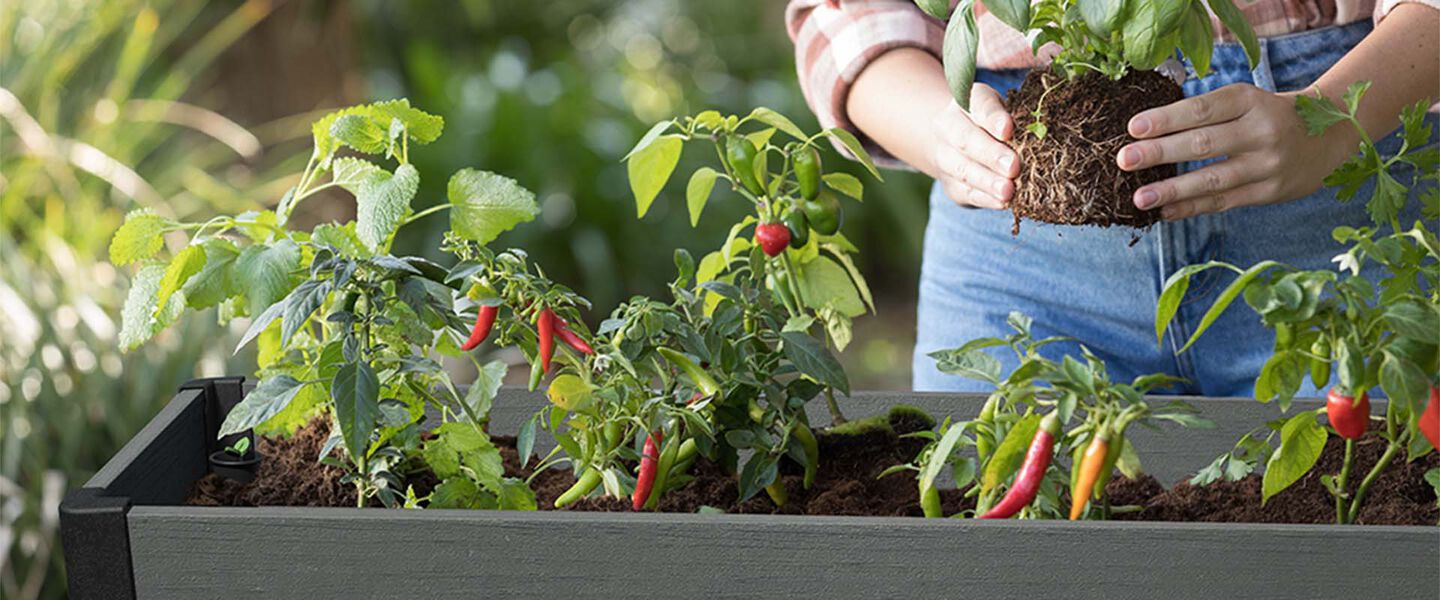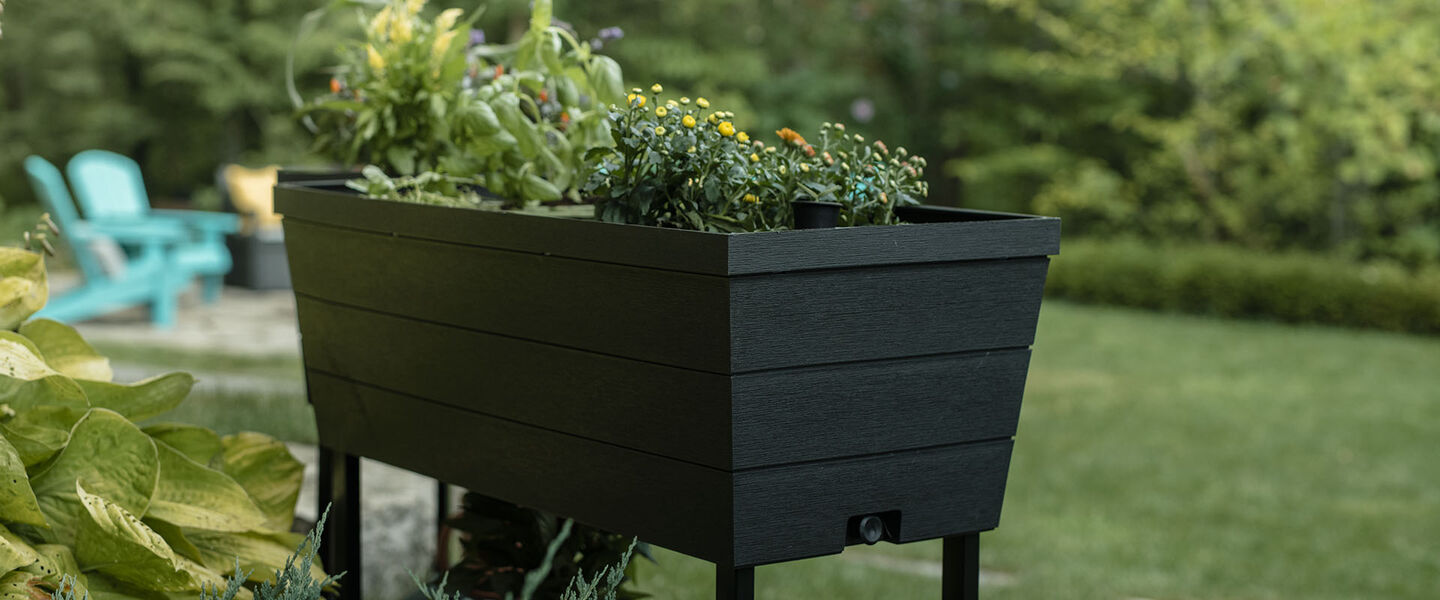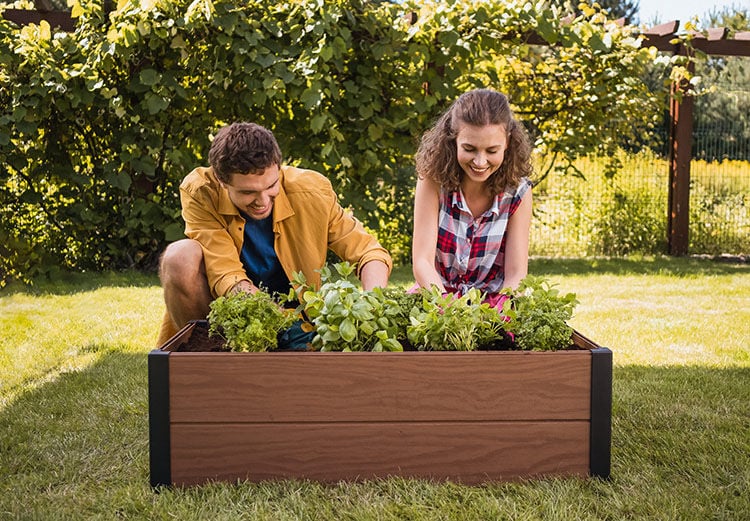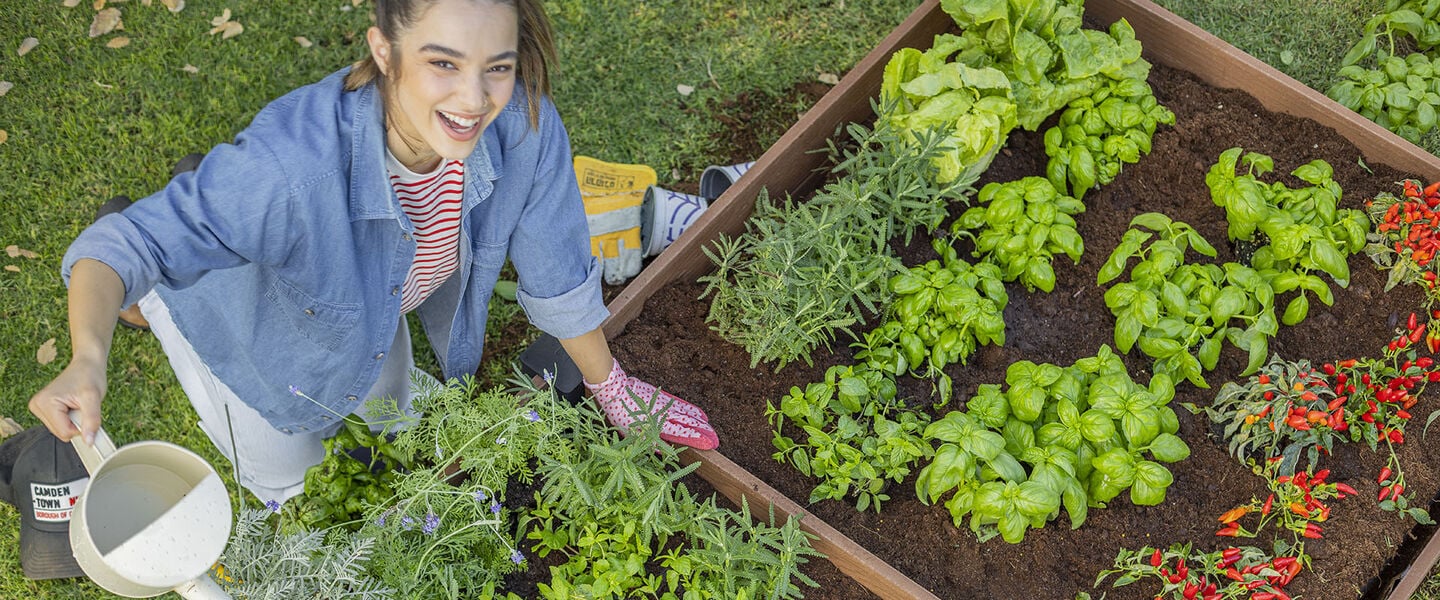
Deciding Between Elevated and Raised Garden Beds
When it comes to above-ground gardens, two popular options stand out: elevated and raised garden beds.
While they may seem similar at first glance, each offers different advantages that cater to different gardening needs and preferences. In this comprehensive guide, we delve into the nuances of elevated and raised garden beds, aiming to assist you in making an informed decision tailored to your specific requirements.
Whether you're a novice gardener pondering the first steps toward cultivating your green space or a seasoned enthusiast seeking to optimize your gardening setup, join us as we explore the distinctions between elevated and raised garden beds. By the end of this journey, you'll be equipped with the knowledge and insights necessary to select the perfect garden bed that not only nurtures your plants but also enhances your gardening experience.
Understanding Elevated Garden Beds

Elevated garden beds are designed to raise the planting surface above ground level. These beds typically consist of a raised platform supported by sturdy legs or a base, creating a waist-high gardening space. Elevated garden beds can vary in size and construction materials, ranging from simple wooden frames to more elaborate structures made of metal, wood, or resin.
Advantages of elevated garden beds:
1. Accessibility for those with mobility issues:
Enhanced accessibility stands out as a key advantage of elevated garden beds. Elevating the planting surface to a convenient height eliminates the necessity for individuals with mobility challenges or physical restrictions to strain or bend excessively while gardening. This accessibility fosters a sense of independence and joy in gardening endeavors, catering to people of diverse ages and capabilities.
2. Better drainage and soil aeration:
Elevated garden beds typically offer superior drainage and soil aeration compared to traditional ground-level beds. The raised platform allows excess water to drain more efficiently, preventing waterlogging and root rot. Additionally, the elevated position promotes air circulation around the soil, which helps to maintain optimal soil moisture levels and encourages healthy root development.
3. Protection from pests and critters:
Elevated garden beds can provide a degree of protection against common garden pests and critters, such as slugs, snails, and rodents. The elevated height makes it more difficult for these pests to access the plants, reducing the likelihood of damage or infestation. Additionally, installing barriers or covers around the perimeter of the elevated bed can further deter unwanted visitors and safeguard your crops.
Examples of suitable scenarios for choosing elevated garden beds:
- Urban gardening: Elevated garden beds are ideal for urban environments where space is limited and soil quality may be poor. They can be placed on patios, rooftops, or balconies allowing urban dwellers to grow their own fresh produce without access to traditional garden plots.
- Senior gardening: Elderly gardeners or individuals with mobility issues can benefit from the accessibility and convenience of elevated garden beds. By bringing the garden to waist height, these beds eliminate the need for bending or kneeling, making gardening activities more enjoyable and manageable.
- Pest management: Gardeners struggling with pest infestations may opt for elevated garden beds as a preventive measure. Elevating the planting surface above ground level serves as a barrier, deterring pests from accessing the plants, thus lowering the risk of damage and reducing the reliance on chemical pesticides.
Exploring Raised Garden Beds

Raised garden beds are elevated planting areas constructed with walls or borders that contain soil above ground level. These beds can be made from various materials like stone, wood, metal, or resin, offering versatility in design and appearance.
Benefits of raised garden beds:
1. Improved soil quality and drainage:
Raised garden beds enable gardeners to fill them with high-quality soil, free from compaction and contamination. This results in an optimal growing environment for plants. Additionally, the elevated position of the beds facilitates better drainage, preventing waterlogging and promoting healthier root growth. You just need to make sure there is a drainage system in the raised garden bed you pick or make.
2. Extended growing season:
Raised garden beds can help extend the growing season by providing warmer soil temperatures earlier in the spring and later into the fall. The elevated position allows the soil to warm up more quickly in the spring, enabling gardeners to start planting earlier and prolonging the harvest season for cold-sensitive crops. This extension of the growing season can sometimes even lead to increased yields and a wider variety of crops.
3. Flexibility in design and size:
Raised garden beds offer flexibility in design and size, allowing gardeners to customize their growing spaces to suit their preferences and available space. These beds can be bought or built in various shapes and dimensions, making them adaptable to different garden layouts and landscapes. Additionally, raised garden beds can be easily expanded or reconfigured as needed, providing flexibility for gardeners to experiment with different planting arrangements and crop rotations.
Instances where raised garden beds are the preferable choice:
- Contaminated soil: Raised garden beds are an excellent option for gardening in areas with contaminated or poor-quality soil. By filling the beds with clean, nutrient-rich soil, gardeners can create a safe and healthy growing environment for their plants, free from harmful contaminants or pollutants.
- Compact or clay soil: Raised garden beds are ideal for gardening in areas with compacted or clay soil, which can hinder root growth and drainage. By elevating the planting surface, gardeners can bypass these soil issues and provide plants with loose, well-aerated soil that promotes healthy root development and optimal moisture retention.
- Urban gardening: Raised garden beds are well-suited for urban environments where space is limited, and soil quality may be poor. These garden beds can be set up on rooftops, balconies, or compact outdoor areas, enabling urban residents to cultivate their own fresh produce even without access to conventional garden plots.
Key Considerations for Decision-Making
Location and space availability: Before choosing between elevated and raised garden beds, consider the location and available space for your gardening project. Evaluate factors such as sunlight exposure, accessibility, and proximity to water sources. Determine whether your garden bed will be placed on a patio, balcony, rooftop, or directly on the ground, and ensure that the chosen location meets the requirements of your selected plants.
Budget considerations: Assess the costs associated with purchasing pre-made garden bed kits, as well as any additional expenses such as soil, amendments, and gardening tools. Compare prices between elevated and raised garden beds, taking into account long-term investment and potential savings in water usage, pest control, and maintenance.
Gardener's physical abilities and preferences: Consider your own physical abilities and gardening preferences when selecting the type of garden bed. If you have mobility issues or difficulty bending down, an elevated garden bed may be more suitable for you, offering easier access and less strain on the body. Alternatively, if you enjoy working directly with the soil and don't mind the physical labor involved in ground-level gardening, a raised garden bed may be a better fit.
Long-term maintenance and durability: Examine the maintenance requirements and durability of elevated and raised garden beds to determine which option aligns with your long-term gardening goals. Consider factors such as the lifespan of the materials used, susceptibility to weathering and deterioration, and ease of repairs or replacements. Choose a garden bed that offers durability and low-maintenance features, minimizing the need for frequent upkeep and ensuring longevity.
Climate and environmental factors: Consider the climatic conditions and environmental factors specific to your location when deciding between elevated and raised garden beds. Consider how each type of garden bed will fare in varying weather conditions, such as extreme heat, cold, or heavy rainfall. Additionally, assess the impact of environmental factors such as wind exposure, soil composition, and potential pest infestations on your gardening project. Choose a garden bed that can withstand the challenges posed by your local climate and environment, ensuring optimal growing conditions for your plants.
Making Your Decision

Making the decision between elevated and raised garden beds requires careful consideration and thoughtful evaluation. Reflect on your personal gardening goals and priorities. Consider what you hope to achieve with your garden, whether it's growing fresh vegetables, creating a visually appealing landscape, or simply enjoying the therapeutic benefits of gardening. Your individual preferences and requirements will play a big part in determining the most suitable type of garden bed for your needs.
If you find yourself uncertain or in need of guidance, don't hesitate to consult with gardening experts or professionals. The expertise they bring can offer invaluable perspectives and customized suggestions perfectly attuned to your unique situation. Finally, when selecting the right type of garden bed, consider practical tips such as assessing the available space, choosing durable materials, and selecting plant varieties that thrive in your climate.
Whether you choose to go with raised garden beds or elevated garden beds, Keter has a solution to fit your gardening needs. Both our raised and elevated garden beds are durable as well as beautiful. Crafted from sturdy resin, these garden beds are engineered to withstand the elements without cracking, rotting, rusting, or peeling, providing long-lasting performance year after year.
Despite their robust construction, Keter's garden beds boast a charming wood-like appearance, adding a touch of natural elegance to any outdoor space. Moreover, their low-maintenance design means you can spend less time on upkeep and more time enjoying your garden. With Keter's raised and elevated garden beds, you can create a thriving garden sanctuary with ease and confidence, no matter which option you choose.

We build in a sustainable manner.
We use innovative materials and leading technologies to build planet-friendly products that last a lifetime.
























